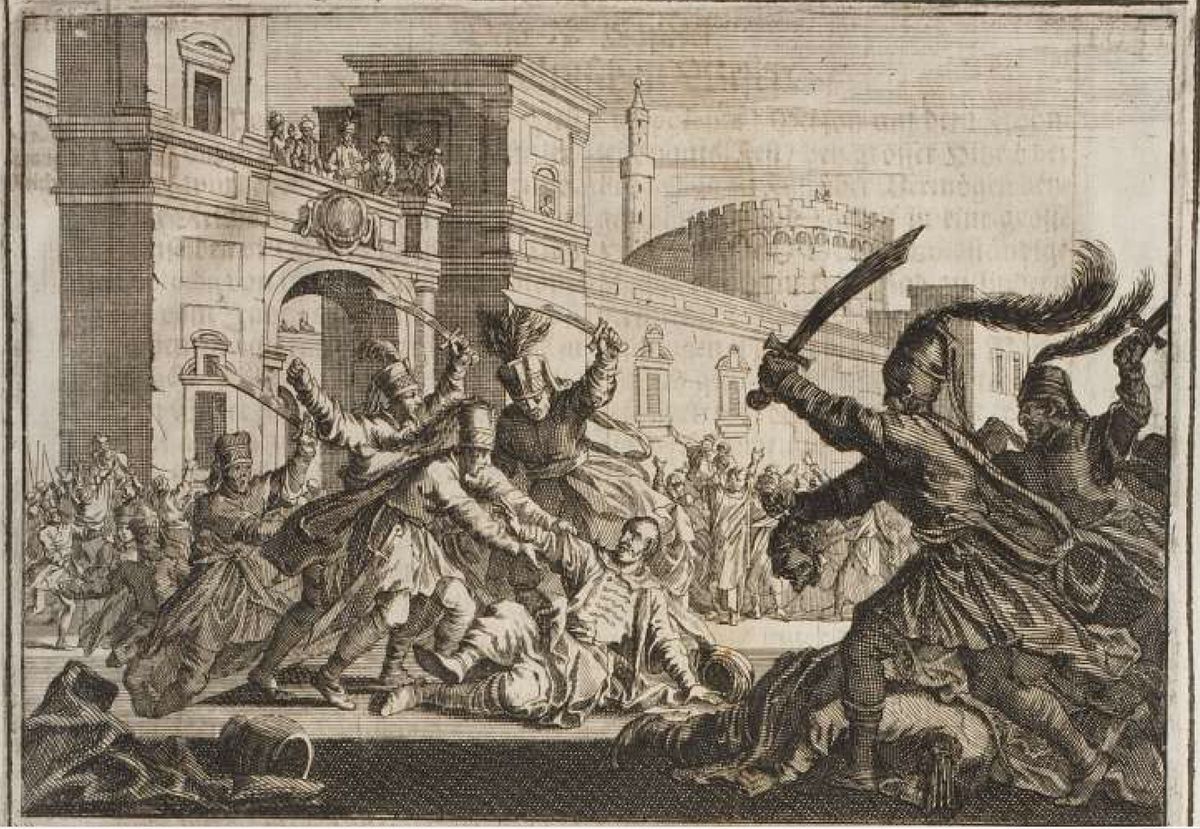
What sparked the Janissaries' Revolt? The Janissaries, elite Ottoman soldiers, revolted due to a mix of discontent and power struggles. Why did they rebel? They were unhappy with reforms that threatened their privileges and status. Who were the key players? Sultan Mahmud II and the Janissaries themselves. When did this happen? The revolt took place in 1826. Where did it unfold? Mainly in Istanbul, the heart of the Ottoman Empire. How did it end? The revolt was crushed, leading to the disbandment of the Janissaries. Why does it matter? This event marked a significant shift in Ottoman military and political history.
Key Takeaways:
- The Janissaries were elite soldiers in the Ottoman Empire, originally Christian boys taken from their families and trained as loyal Muslim soldiers. Their revolts weakened the empire and led to military modernization.
- The Janissaries' legacy lives on through their bravery, influence on Ottoman society, and their dramatic downfall in the "Auspicious Incident." Their unique culture and role in history continue to fascinate people today.
Origins of the Janissaries
The Janissaries were an elite military unit in the Ottoman Empire. Their influence grew over time, leading to significant political power.
- The Janissaries were originally composed of Christian boys taken from their families through a system called devshirme.
- These boys were converted to Islam and trained as soldiers, forming the backbone of the Ottoman military.
- The Janissaries were known for their strict discipline and loyalty to the Sultan, making them a formidable force.
Causes of the Revolt
Several factors contributed to the Janissaries' decision to revolt against the Ottoman rulers.
- Economic hardship and corruption within the ranks led to dissatisfaction among the Janissaries.
- The introduction of new military technologies and tactics made the Janissaries feel obsolete and threatened.
- Political power struggles within the Ottoman Empire also fueled the Janissaries' desire for change.
Key Events of the Revolt
The revolt was marked by several significant events that shaped its outcome.
- The first major uprising occurred in 1449, when the Janissaries demanded higher wages and better living conditions.
- In 1622, the Janissaries successfully deposed Sultan Osman II, demonstrating their growing power.
- The most famous revolt took place in 1807-1808, known as the Auspicious Incident, which led to the disbandment of the Janissaries.
Impact on the Ottoman Empire
The Janissaries' revolts had lasting effects on the Ottoman Empire, both politically and militarily.
- The revolts weakened the central authority of the Sultan, leading to increased instability within the empire.
- The disbandment of the Janissaries marked the end of an era and the beginning of military modernization in the Ottoman Empire.
- The revolts also highlighted the need for reform within the Ottoman military and government structures.
Legacy of the Janissaries
Despite their eventual downfall, the Janissaries left a lasting legacy in Ottoman history.
- The Janissaries are often remembered for their bravery and military prowess.
- Their influence on Ottoman politics and society can still be seen in historical records and cultural references.
- The story of the Janissaries serves as a reminder of the complex relationship between military power and political authority.
Cultural Depictions of the Janissaries
The Janissaries have been depicted in various forms of art and literature, reflecting their historical significance.
- Ottoman miniatures often portrayed Janissaries in their distinctive uniforms and military formations.
- European travelers and writers frequently described the Janissaries in their accounts of the Ottoman Empire.
- Modern films and television series have also explored the history and impact of the Janissaries.
The End of the Janissaries
The final chapter of the Janissaries' history was marked by their dramatic downfall.
- The Auspicious Incident in 1826 saw the Janissaries being violently suppressed by Sultan Mahmud II's forces.
- Many Janissaries were killed or imprisoned, and their barracks were destroyed.
- The disbandment of the Janissaries allowed for the creation of a new, modernized Ottoman army.
Interesting Facts about the Janissaries
There are many fascinating details about the Janissaries that highlight their unique role in history.
- The Janissaries were one of the first military units to use firearms extensively.
- They had their own distinct culture, including music and traditions, which set them apart from other Ottoman soldiers.
- The Janissaries were forbidden to marry or engage in trade, ensuring their loyalty to the Sultan.
- Despite their elite status, the Janissaries often lived in humble conditions, reflecting their origins as conscripted boys.
Final Glimpse at Janissaries' Revolt
The Janissaries' Revolt wasn't just a blip in history; it reshaped the Ottoman Empire. These elite soldiers, once the backbone of the Sultan's power, turned into a force of rebellion. Their uprisings highlighted the growing tensions within the empire and the need for reform. The revolts led to significant changes, including the eventual disbandment of the Janissary corps in 1826. This move marked the end of an era and the beginning of modernization efforts within the Ottoman military. Understanding these revolts gives us a clearer picture of the complexities and challenges faced by the empire during that time. It’s a reminder of how power dynamics can shift and the impact such changes can have on a nation's history. The Janissaries' Revolt remains a pivotal chapter, illustrating the delicate balance between tradition and progress.
Frequently Asked Questions
Was this page helpful?
Our commitment to delivering trustworthy and engaging content is at the heart of what we do. Each fact on our site is contributed by real users like you, bringing a wealth of diverse insights and information. To ensure the highest standards of accuracy and reliability, our dedicated editors meticulously review each submission. This process guarantees that the facts we share are not only fascinating but also credible. Trust in our commitment to quality and authenticity as you explore and learn with us.
